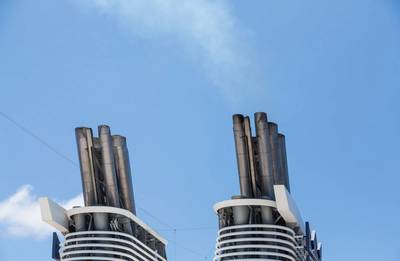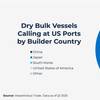New Ship Emission Regs: Dirty Fuel Down but Not Out
Asia's spot premium for 380-centistoke (cst) high-sulphur fuel oil (HSFO) is expected to ease gradually from its recent record highs as shippers adopt cleaner marine fuels next year to meet new, tougher rules on emissions from ships.
But as the deadline approaches, analysts and traders agree that demand for the dirtier HSFO will not die out completely as an increasing number of ships get equipped with sulphur-cleaning devices in the coming years to combat pollution.
Starting Jan. 1, 2020, the International Maritime Organization (IMO) requires the use of bunker fuel with a sulphur limit of 0.5%, down from 3.5% currently.
Only ships fitted with expensive exhaust cleaning systems, known as scrubbers, which can remove sulphur from emissions, will be allowed to continue burning HSFO.
"There's been scrubber investment ... that's the proportion of folks that will continue to use high-sulphur fuel oil although we see a significant reduction in demand in the short run," Sharon Weintraub, Chief Executive Officer for Supply and Trading, Eastern Hemisphere at BP told Reuters.
"But, we expect that over time there will be more scrubber investment actually beyond 2020 - into the 2020-2024 range - we would see perhaps that demand growing back for high-sulphur fuel oil versus the short-term shift to very low-sulphur fuel oil."
Even with the shift to compliant fuels such as low-suphur fuel oil or marine gasoil, HSFO should still constitute about 15-20% of the entire marine fuel product mix, industry sources and traders said. The global shipping industry currently consumes about 3.6 million barrels per day (bpd) of HSFO.
The trade sources declined to be identified as they are unauthorised to speak to the media.
The new IMO regulations will affect fuel supplies to more than 50,000 merchant ships globally.
"We expect roughly 2,400 scrubbers will cover 600,000 barrels per day (16-17% of demand) for January, 2020," S&P Global Platts said in a statement on Monday during an industry conference in Singapore.
"That increases to over 3,500 by end 2020 with more upside potential," according to S&P Global Platts.
Ship classification society DNV-GL forecasts the number of ships with installed scrubbers is expected to rise steadily to about 3,800 by 2023.
The DNV-GL data also shows bulk carriers would form the majority of ships with scrubbers.
Reporting by Koustav Samanta














